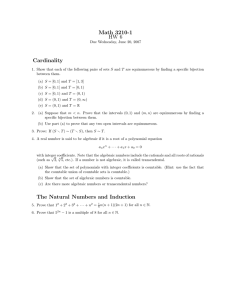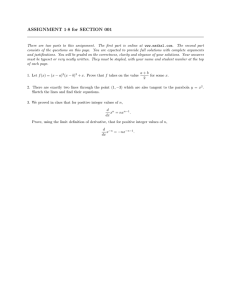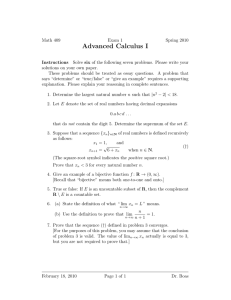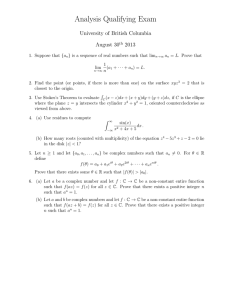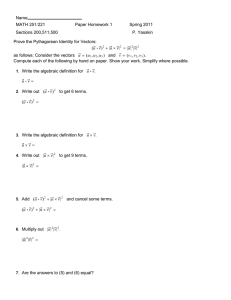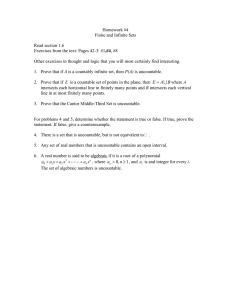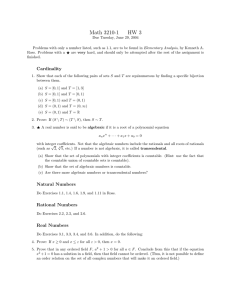Math 320, Fall 2007, Homework Set 3 Instructions
advertisement
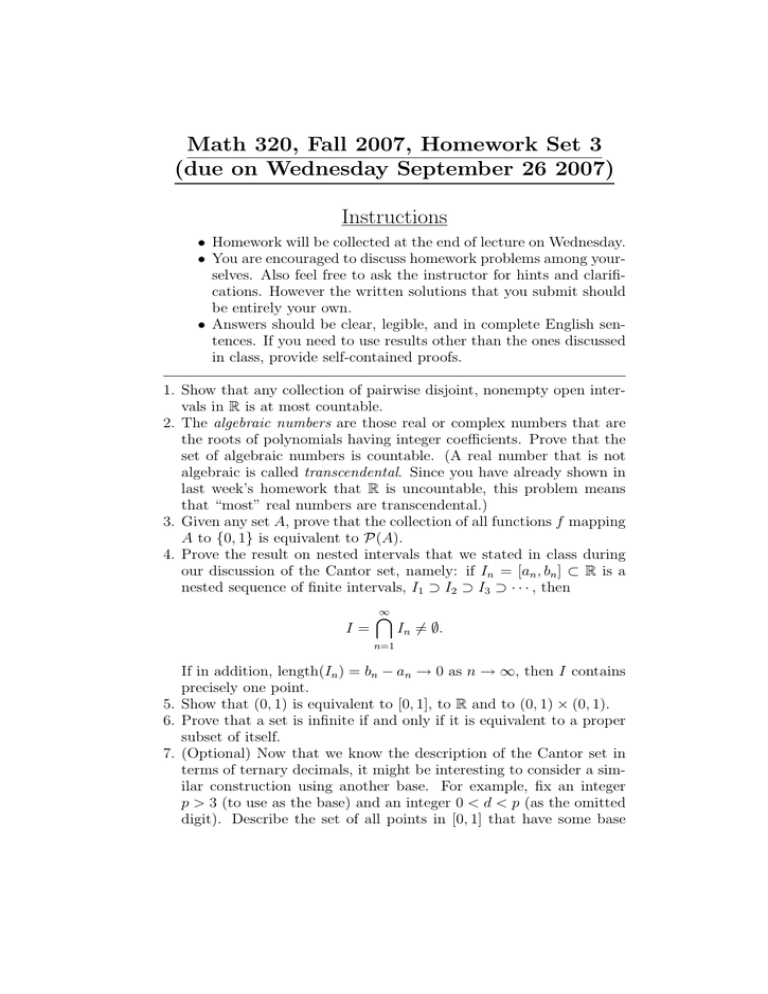
Math 320, Fall 2007, Homework Set 3
(due on Wednesday September 26 2007)
Instructions
• Homework will be collected at the end of lecture on Wednesday.
• You are encouraged to discuss homework problems among yourselves. Also feel free to ask the instructor for hints and clarifications. However the written solutions that you submit should
be entirely your own.
• Answers should be clear, legible, and in complete English sentences. If you need to use results other than the ones discussed
in class, provide self-contained proofs.
1. Show that any collection of pairwise disjoint, nonempty open intervals in R is at most countable.
2. The algebraic numbers are those real or complex numbers that are
the roots of polynomials having integer coefficients. Prove that the
set of algebraic numbers is countable. (A real number that is not
algebraic is called transcendental. Since you have already shown in
last week’s homework that R is uncountable, this problem means
that “most” real numbers are transcendental.)
3. Given any set A, prove that the collection of all functions f mapping
A to {0, 1} is equivalent to P(A).
4. Prove the result on nested intervals that we stated in class during
our discussion of the Cantor set, namely: if In = [an , bn ] ⊂ R is a
nested sequence of finite intervals, I1 ⊃ I2 ⊃ I3 ⊃ · · · , then
I=
∞
\
In 6= ∅.
n=1
If in addition, length(In ) = bn − an → 0 as n → ∞, then I contains
precisely one point.
5. Show that (0, 1) is equivalent to [0, 1], to R and to (0, 1) × (0, 1).
6. Prove that a set is infinite if and only if it is equivalent to a proper
subset of itself.
7. (Optional) Now that we know the description of the Cantor set in
terms of ternary decimals, it might be interesting to consider a similar construction using another base. For example, fix an integer
p > 3 (to use as the base) and an integer 0 < d < p (as the omitted
digit). Describe the set of all points in [0, 1] that have some base
2
p decimal expansion that excludes the digit d. Is it uncountable?
Does it have measure zero?
8. (Extra credit) Prove that N contains uncountably many infinite subsets {Nα } such that Nα ∩ Nβ is finite for α 6= β.
